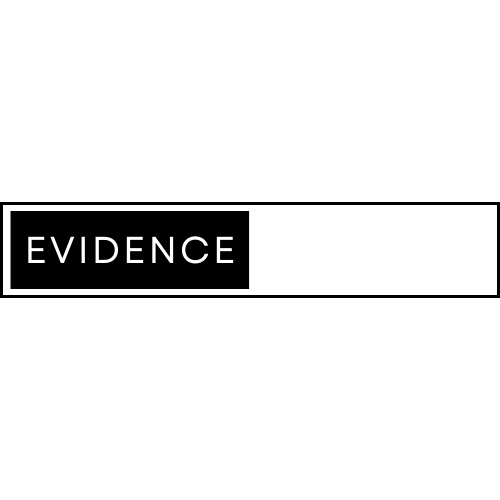David Chirko, A.B. (humanities/social sciences), Psychologically oriented researcher and author, Sudbury, Ontario, Canada
When I was in university some colleagues of mine, who were completing their BSW’s, invited me to engage in participant observation within their group psychotherapy sessions at a local mental health facility.
Participant observation is defined as: “a quasi-experimental research method in which a trained investigator studies a preexisting group by joining it as a member, while avoiding a conspicuous role that would alter…group processes and bias…data. The researcher’s role may be known or unknown to…other members of the group” (VandenBos, 2015, p. 765). My role was known. Little has been penned about participant observers, although such a method is employed often (Kislev, 2015).
Group Setup, Members’ Backgrounds, Dynamics
Many of the facilitators–psychologists, social workers and activities therapists–worked in an area of the facility called “the rug room,” where they and group members sat on a rug laden floor during sessions, which were sometimes videotaped. The therapy group later moved to a downtown drop-in centre.
It was individuals who were being treated and some of the group members were from the inpatient mental health facility. However, most were either outpatients, or any younger person (mid to late teens) who needed a group of sympathetic ears to address their problems1. The most common entailed drug and alcohol abuse recovery, or family, school, and work, issues. They came from various socio-economic backgrounds. The therapeutic methodology was interpersonal. Yalom and Leszcz (2020, p. 5) talk about how interpersonal, and character, change comes about. They say the mantra in group therapy sessions should be: “The interactional focus is the engine of group therapy.”
Also, group is a social microcosm—outside social difficulties arise within it. However, within group one’s relations transfer knowledge to the outside for improved relationships (Yalom & Leszcz, 2020, p. 670). In our group, dynamics became more complex as behavior in one gathering differed from another setting. This was evident in school and home situations, although sparse connection existed between teachers and parents with the group.
In the aforementioned microcosm I noticed a bond of trust amongst the facilitators and all group members was incessantly encouraged. Therein they offered hope in improving members’ unpleasant situations in life. Stotland (1969, p. 2) defines hope as confidently expecting something a person wants. The potentiality of expectation in psychotherapy has been spoken of by numerous theorists Stotland (p. 145) claims, like Sigmund Freud (1953, p. 250) who thought that “expectant faith” has a curative influence. In group therapy, when hope is present, the patient becomes more engaged. Through confidence and expectation, one dispels biased negativity beforehand, then personality change can eventualize (Yalom & Leszcz, 2020, p. 13).
Therapists’ Bible(s)
Some members feted the literary elixir of the day–the classic of transactional analysis (TA): I’m OK, You’re OK, by Thomas Harris. In fact, one of the facility’s psychologists was a TA specialist, although not present in the group and didn’t endorse universal group therapy. Sigmund Freud’s work sometimes entered interactions, because the argot in group was a skosh psychoanalytic, but only the leaders might be familiar with, say, Group Psychology and the Analysis of the Ego. Moreover, there was a countertransference to be managed, as Yalom and Leszcz (2020, p. 3) encouraged.
Criticism
What was being done in group and the people doing it didn’t always sit well with professionals in other organizations. So, are the correct methodologies utilized and are they adhering to proper protocol at the group I was participating in? Yalom and Leszcz (2020, pp. 9-10) explain that some therapists are more effective than others and experience alone does not ameliorate one’s abilities as a group leader. Further, they state that feedback, reflecting on oneself, practice, and empathetic rapprochement are paramount.
Of over 15 group methodologies extant, it appeared that what they employed was a hodgepodge, with no one lucid direction. The entire format was loosely structured, which I had little affinity for. There was a preponderance of the “just let it out” philosophy–advice and feedback occurring anywhere. Subsequently, the facilitators attempted to eschew terminology because they believed it stifled expression of one’s gut feelings. In the end, it was arduous to categorize everything that transpired. Moreover, did the facilitators continuously immerse themselves in the appropriate evidence-based principles and guidelines, Yalom and Leszcz (2020, p. 3) mentioned? Time would tell, because they were relatively new at the game.
Summary
As a participant observer, I found group psychotherapy provides youngsters an ear for the expression of their conflictual feelings. They learn to be interactional, helping others do the same. This all buttresses hope.
Notes
1 Although when group encounters became challenging for some members, they would either enquire about seeing a psychiatrist at the facility, or, even leave the room to immediately obtain a psychiatrist they were seeing privately. Nevertheless, it’s been found that group therapy is as effective as individual therapy (Burlingame, Strauss, & Joyce, 2013, pp. 640-689).
References
Burlingame, Gary M., Strauss, Bernhard, & Joyce, Anthony S. (2013). Change mechanisms and effectiveness of small group treatments. In M. J. Lambert (Ed.), Bergin and Garfield’s Handbook of Psychotherapy and Behavior Change (6th Edition), 640-689. New York, NY: Wiley & Sons.
Freud, Sigmund. (1953). Collected Papers. Vol. 1, On Psychotherapy. London, UK: Hogarth Press.
_____________. (1960). Group Psychology and the Analysis of the Ego. New York, NY: Bantam Books.
Harris, Thomas. (1973). I’m OK—You’re OK. New York, NY: Avon Books.
Kislev, Elyakim. The Use of Participant-Observers in Group Therapy: A Critical Exploration in Light of Foucauldian Theory in Group, Vol. 39, No. 1, Spring 2015, 9-24.
Perls, Fritz. (1969). Gestalt Therapy Verbatim. Moab, Utah: Real People Press.
Stotland, Ezra. (1969). The Psychology of Hope. San Francisco, CA: Jossey-Bass, Inc., Publishers.
VandenBos, Gary R. (2015). APA Dictionary of Psychology 2nd Edition, Washington, DC: American Psychological Association.
Yalom, Irvin D., & Leszcz, Molyn. (2020). The Theory and Practice of Group Psychotherapy 6th Edition. New York, NY: Basic Books.


